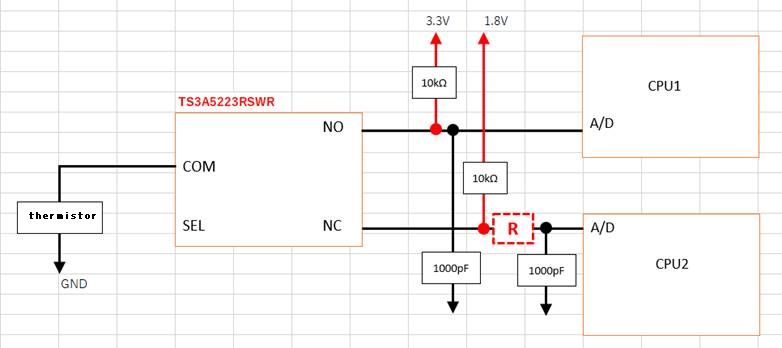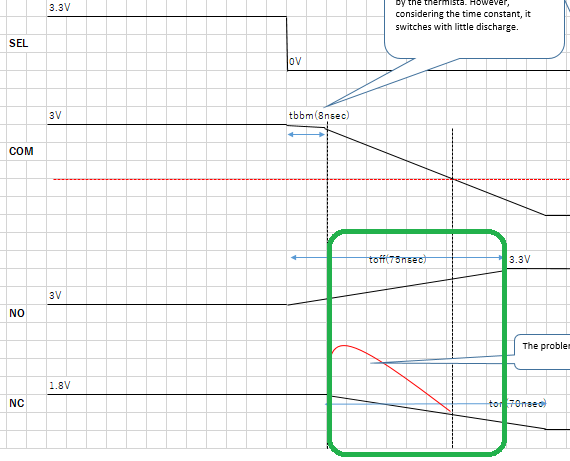Other Parts Discussed in Thread: TMUX1237,
Currently, this IC is used as follows.
One thermistor is connected to microcomputers with different drive voltages, and they are switched and used depending on the situation.
For example, when the thermistor is set to 100kΩ and COM and NO are connected, 3V will be applied to CPU1.
Next, when the COM connection destination was switched to NC, a voltage exceeding 1.8V was transiently applied to CPU2.
If no measures were taken, it would have exceeded about 0.5V at room temperature with n = 1.
When I put 1kΩ in R of the dotted line in the figure below as a trial, it was suppressed to about 0.1V.
In addition, Vcc uses 3.3V input and SEL uses 0 / 3.3V input.
So I ask.
1. Is this behavior as expected?
2. It seems that COM, NO, NC are turned on at the same time transiently, but is it possible in principle?
3. If it is as above, is there any other good countermeasure?
4. If we try to add R as shown in the figure below, is it possible to designly suppress how much value should be entered?
In other words, is it possible to indicate how long it will take to turn on at the same time as a design or ability value?
Best Regards.








